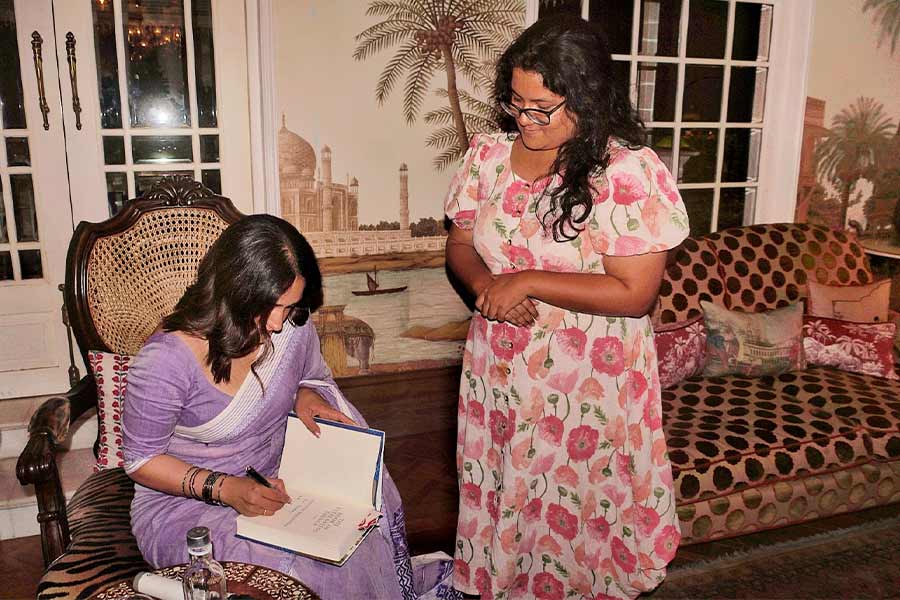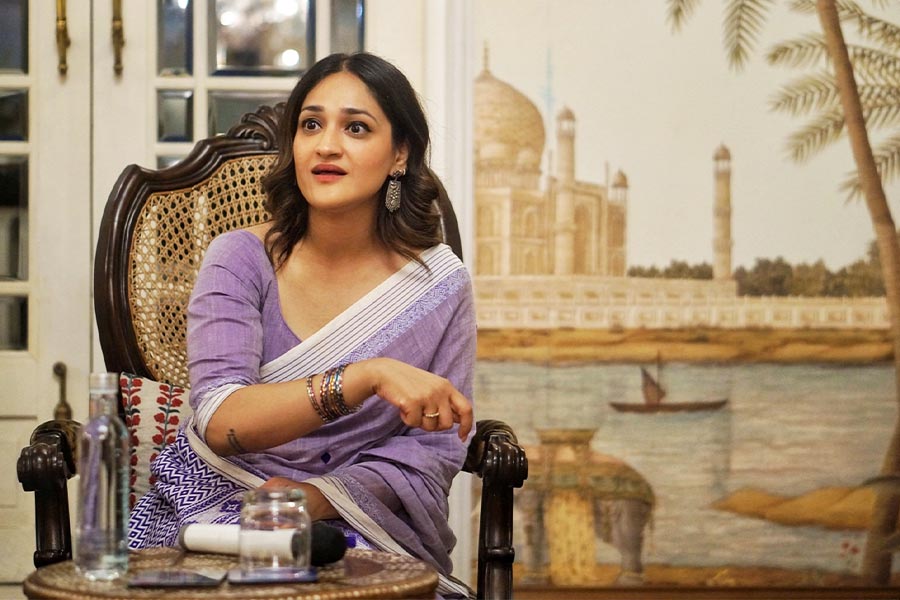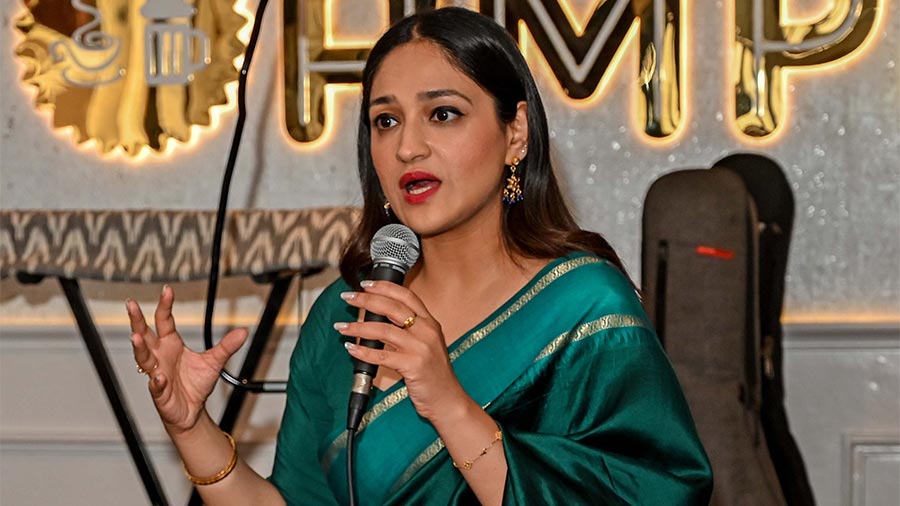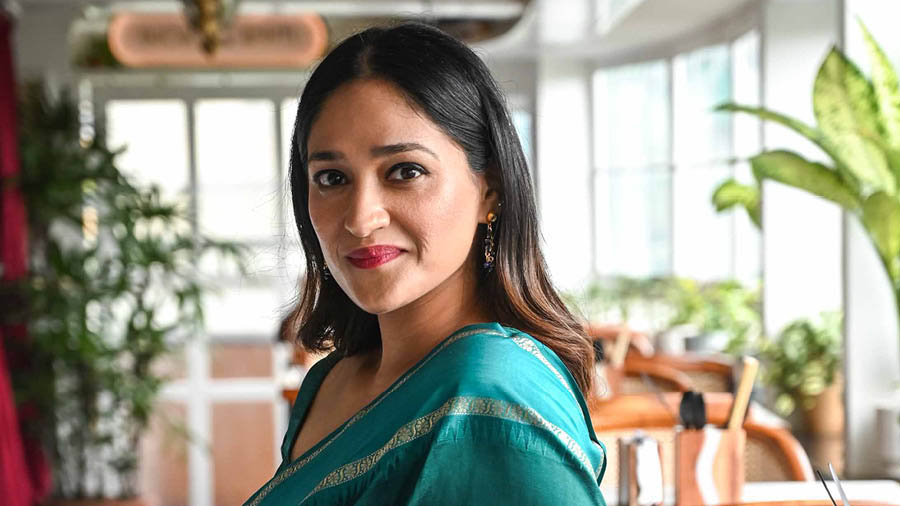Over the past seven years, Aanchal Malhotra has become one of the definitive voices on Partition, creating a rich repository on the largest mass migration in history. On May 15, the author spoke to Partition scholar Rituparna Roy in a chat titled “Fractured Homelands — Of Dream and Memory”, organised by the Glenburn Culture Club. My Kolkata witnessed the conversation unfold at The Glenburn Penthouse.
Having grown up in the family that owns the Bahrisons bookstore, Aanchal confessed that she loved reading, but was too intimidated to write. Instead, she found a skill in printmaking and pursued it for nine years. “In this discipline, you don’t know what something will look like until you print it. This made me patient and diligent, while teaching me to never give up, skills that are essential for an oral historian,” said Aanchal. In 2013, while working on her master’s thesis, Aanchal took a sabbatical to come back to India. It was here that she came across a ghara and a gaz, ordinary objects that she had seen her entire life made extraordinary by how her grandparents had carried them across the border in 1947. “The objects transported the owner to their childhood when they started talking about them. I had never asked my family about Partition till then.”
‘As an artist, you're trained to observe things and your senses are heightened’

Rituparan Roy (left) in conversation with Aanchal
For the next two months, Aanchal went around Delhi, recording memories of Partition survivors, in relation to the objects they brought with them. It was there that her printmaking background came in handy. “As an artist, you’re trained to observe things and your senses are heightened. While looking at these objects, I examined colour, texture, smell and form, and while interviewing people who carried them, I listened to what they didn’t say. The gestures, movements and pauses, coupled with how they caressed certain things, deepened my understanding. The object became a portal to a different time,” she added.
Aanchal also felt that this research strengthened her relationship with her family, providing her a better understanding of their sacrifice. One of the biggest takeaways from the project was how the Partition wasn’t just something that happened in August 1947, but impacted people for years. The project finally took the form of her first book, Remnants of a Separation, in 2017.
“Remnants was a landmark book in how it opened a new direction for Partition studies. Earlier, the period was a collection of facts and dates, but after the book, oral history started getting more attention. It also demonstrated the power of material memory,” observed Rituparna. She also said that since people were reclaiming the narrative by sharing their own stories, Partition studies was reaching a far bigger audience than before. “The feminist oral history projects are particularly remarkable. For the first time, men aren’t speaking for women. And women get to tell their story with dignity and respect, in their language.”
‘Sometimes museums can reduce objects to just something you see behind a glass’

Aanchal’s first fiction book also revolves around a Partition story
Remnants spawned a unique phenomenon. Many readers related accounts from the book to their own family, and reached out to Aanchal. She noticed that the third generation of Partition, just like her, felt a strange connection with their roots in Pakistan. “It’s easy to be blinded by hate, but these stories teach you that Partition was much more than that,” said Aanchal. These inherited experiences paved the way for her second book, In the Language of Remembering, in 2022.
The desire to find nuanced stories in history also led Aanchal to co-found The Museum of Material Memory, a digital repository that traces family history through heirlooms and tokens. She specifically chose a digital medium to subvert South Asian borders, and make it accessible to people across countries. “Sometimes museums can reduce objects to just something you see behind a glass. But the moment you tell their story, an object becomes so much more,” explained Aanchal. Rituparna also conceived the Kolkata Partition Museum Project with a similar purpose: “This digital museum is the best way for people to discover something, and discover themselves through it.”
In 2022, Aanchal released her third book, and her first work of fiction, The Book of Everlasting Things. It followed a love story between a Hindu perfumer, Samir, and a Muslim calligrapher, Firdaus, whose families are torn apart during Partition. “I wanted to explore how similar the stories on both sides were, and check my own prejudice in the process,” she concluded.
Guests speak

Anjum Katyal

Aanchal’s work is unique because of how she walks the line between personal and intimate, while exploring bigger ideas of loss and exile. The conversation asked and answered pertinent questions around displacement.
Anjum Katyal, author

Ishika Mitra



